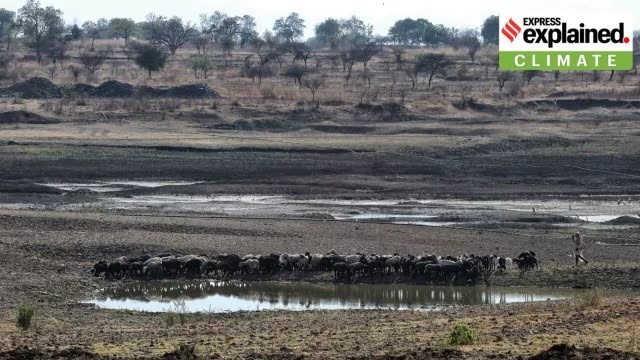
State of the Climate in Asia 2023 Report

25.04.2024
State of the Climate in Asia 2023 Report
|
For Prelims: About State of the Climate in Asia 2023 Report, Key facts about the WMO, About India in 'State of Climate in Asia 2023' report |
Why in the news?
Recently, the World Meteorological Organisation (WMO) published the State of the Climate in Asia, 2023, report.
About State of the Climate in Asia 2023 Report:
- It was launched by the World Meteorological Organisation. Some of the important highlights of the report are:
○ 79 events associated with extreme weather, climate and water-related hazards in 2023 affected over 9 million people in the region, directly killing over 2,000 people.
○Asia and the Pacific continent was the most disaster impacted region last year.
○Atmospheric concentration of the three major greenhouse gasses carbon dioxide, methane and nitrous oxide reached record highs in 2022.
○Oceans have absorbed around 25% of annual man-made carbon dioxide emitted into the atmosphere between 1960 and 2021. The trend continues, and ocean heat content in 2023 was the highest on record.
○The tropical cyclone activity over the North Indian Ocean was slightly above average.
○Asia recorded its second-highest mean temperature on record in 2023. Japan and Kazakhstan observed record warm years.
○Glaciers continued to retreat at an accelerating rate in 2023. High temperatures and dry conditions in East Himalayas and Central Asia’s Tian Shan mountains accelerated glacial mass loss.
About India in 'State of Climate in Asia 2023' report:
- In India, the impact of extreme weather events was strongly felt as the country experienced severe heat waves, rainfall-induced floods, glacial lake outbursts and tropical cyclones.
- Severe heat waves (in April and June 2023) resulted in approximately 110 deaths due to heatstroke.
○For example, more than 100 people died in Ballia and Deoria districts of Uttar Pradesh, many of whom were senior citizens with co-morbidities.
○ The temperature in the area during these heat-related deaths was between 42-43 degrees Celsius.
- Flooding occurred in India during August 2023 and resulted in 25 deaths as well as widespread damage to infrastructure and agriculture in Himachal Pradesh and Uttarakhand.
○The Government of India declared a state of emergency in the worst-hit areas, launching rescue and relief operations.
- The Indian subcontinent experienced six tropical cyclones in 2023 that formed in the northern Indian Ocean. Cyclone activity was slightly above the average of 5.4 cyclones.
○Of the six cyclones, four – Mocha, Hamoon, Midhili and Michong – formed over the Bay of Bengal and two – Biparjoy and Tej – formed over the Arabian Sea.
- On October 4 last year, a significant glacial lake outburst at South Lhonak Lake in Sikkim breached the Chungthang Dam downstream on the Teesta River and killed more than 40 people.
Key facts about the WMO:
- It is a specialized agency of the United Nations (UN). It is the authoritative voice on the state and behavior of the Earth's atmosphere, its interaction with the oceans and the resulting distribution of water resources.
- It originated from the International Meteorological Organization (IMO), which was founded in 1873. Established in 1950, WMO became the specialized agency of the UN for meteorology (weather and climate), operational hydrology and related geophysical sciences.
- Headquarters: Geneva, Switzerland.
- Member countries: Currently it has a membership of 187 countries.
Source: Indian Express